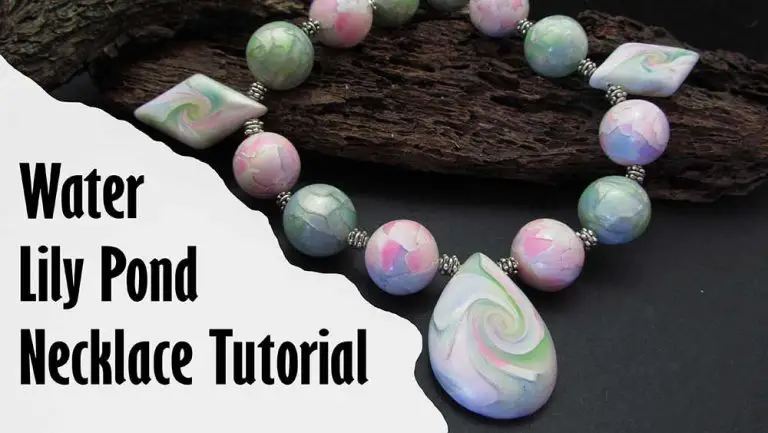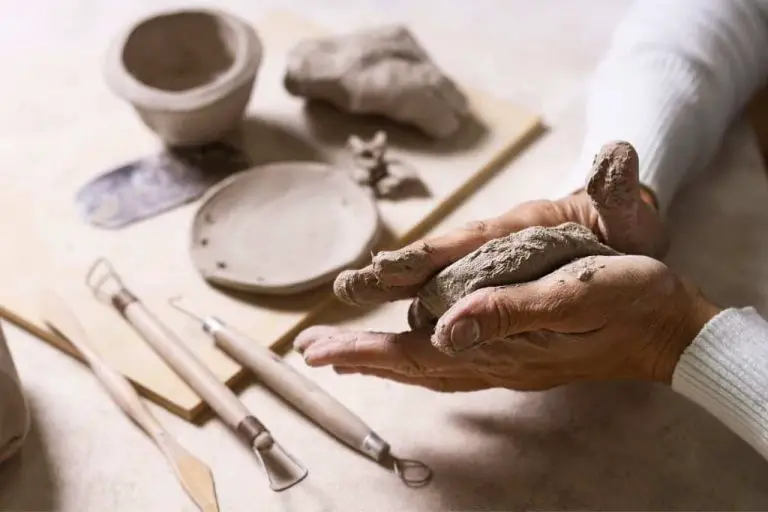What Are The Raw Materials Of Porcelain?
Porcelain refers to a category of high-fired ceramic ware. It originated in China and became popular across Europe and the rest of the world by the 18th century. The word “porcelain” comes from the Italian word “porcellana” meaning cowry shell, due to its resemblance to the surface of polished shells.
According to Landmark Ceramics, porcelain is defined by three primary characteristics: it is white, translucent, and resonant when struck. These qualities are achieved through the use of specific raw materials and high firing temperatures ranging between 2,200 to 2,600 degrees Fahrenheit.
The three main ingredients that comprise porcelain are kaolin, quartz, and feldspar. Kaolin provides plasticity and strength when fired. Quartz creates translucency. Feldspar acts as a flux to lower the firing temperature. Additional materials like calcined bone may also be incorporated for qualities like whiteness.
Clay
The main types of clay used to create porcelain are kaolin, ball clay, and potash feldspar.[1] Kaolin clay, also known as China clay, is a white and very pure clay that provides porcelain with plasticity and strength when fired.[2] Ball clay is very plastic and gives porcelain its strength and workability.[1] Potash feldspar is an important flux that lowers the vitrification temperature of clay so that it can be fired at lower temperatures to produce porcelain.[2]
These types of clay are essential for making porcelain because they contain the right proportions of silica, alumina, and fluxes. Kaolin has a high silica and alumina content while ball clay provides plasticity. The fluxes in potash feldspar allow the clay to vitrify at the lower temperatures needed for porcelain.[1] When these clays are combined and fired, they produce the characteristic hardness, whiteness, and translucency of porcelain.
[1] https://www.soulceramics.com/pages/porcelain-clay
[2] https://thepotterywheel.com/types-of-clay-for-pottery/
Feldspar
Feldspar plays a key role in porcelain production. It acts as a flux, lowering the vitrification temperature of quartz and promoting the formation of glassy phase at lower temperatures (https://holst-porzellan.com/en/knowledge/raw-materials/feldspar/). The two main types of feldspar used are potassium feldspar and sodium feldspar.
Potassium feldspars like orthoclase and microcline are primarily used because their color, hardness (Mohs 6-6.5) and sintering properties make them best suited for porcelain production (https://holst-porzellan.com/en/knowledge/raw-materials/feldspar/). Sodium feldspars like albite can also be used but are less common.
The lower melting point of feldspar allows porcelain to vitrify at temperatures around 1,280°C. Without fluxing agents like feldspar, quartz would not reach its melting point until over 1,700°C (https://holst-porzellan.com/en/knowledge/types-of-ceramics/feldspathic-porcelain/). Feldspar enables porcelain to fuse properly at much lower and more feasible temperatures.
Silica
Silica is an essential component of porcelain and ceramic tiles. It is a naturally occurring mineral found in materials like sand, quartz, granite, and other rocks. According to Florim, silica makes up around half of the weight of porcelain tile bodies. It is added to provide strength, rigidity, and low porosity.[1]
Urban Edge Ceramics notes that silica levels in porcelain tiles typically range from 14% to 18%. The high silica content helps make the tiles denser and more durable than other types of tiles.[2] According to an Aqua Bell Tile product data sheet, their porcelain tiles contain 14-18% silica.[3]
Silica is a key component that gives porcelain tiles their hardness, strength, and resistance to water absorption. Different sources of silica used in porcelain production include quartz, sand, granite, and other natural stones. Controlling the silica particle size and purity allows manufacturers to optimize the porcelain body for durability and quality.
Calcined Bones
Calcined bones refer to cattle bones that have been fired at high temperatures to create a powder consisting primarily of calcium phosphate (Laguna Clay Company FL Axner.com – Bone Ash). This material serves an important purpose as a flux in porcelain bodies, promoting vitrification at lower temperatures (Bone Ash). The bones are carefully selected, cleaned, and then calcined around 1,800°F to burn away organics and convert the hydroxyapatite in bones to beta-tricalcium phosphate (Bone ash).
Historically, calcined bones were critical for achieving translucency in early European and Asian porcelains. The mineral apatite in bones acts as a flux, allowing quartz to liquefy at lower temperatures. This results in a whiter, denser body with higher mechanical strength. While other materials like feldspar also provide fluxing action, calcined bones were uniquely able to promote transparency in the first porcelains (Bone ash).
Today, calcined bones remain an important ingredient in some bone china and porcelain formulations. The calcium phosphate content improves fired strength, warpage resistance, and glaze fit. While not a required ingredient, calcined bones can optimize certain physical and working properties in high quality porcelains (Digitalfire – Bone Ash).
Kaolin
Kaolin, also known as China clay, is a soft white clay that is an essential raw material for porcelain production. Kaolin has a high fusion temperature and white-burning properties that make it ideal for manufacturing porcelain. Some key properties of kaolin that make it suitable for porcelain include:
- Plasticity – Kaolin has high plasticity which allows it to be molded.
- Whiteness – Kaolin fires into a white color which gives porcelain its distinctive appearance.
- Low impurities – Highly pure kaolin results in porcelain with higher strength.
- Refractoriness – Kaolin has a high melting point, allowing porcelain to be fired at very high temperatures.
Primary sources of kaolin include deposits in Brazil, Bulgaria, France and the UK. The name comes from Gaoling, a Chinese village where kaolin clay was originally discovered and mined. Finely ground kaolin forms the basis of many porcelain clay bodies.
Ball Clay
Ball clay is a fine-grained, highly plastic secondary clay that is mainly used to impart plasticity and strength to ceramic bodies and porcelain (https://digitalfire.com/material/ball+clay). It has high kaolinite content but also some mica and feldspar impurities that contribute to its superior plasticity compared to kaolin (https://www.imerys.com/minerals/ball-clay).
The small particle size of ball clays allows it to fill the spaces between larger particles and give clay more plasticity and strength. Ball clays are more plastic and have higher dry strength than kaolin clays. The higher plasticity allows ceramic products to be shaped with finer detail compared to using just kaolin (https://www.imerys.com/product-ranges/ball-clay-ceramics).
Ball clays are valued for their binding strength, plasticity and also their light firing color. The firing color depends on the impurities present but they generally fire to a light cream or near white color. This makes them ideal for use in whiteware and porcelain bodies where a white color is desired after firing.
Potash Feldspar
Potash feldspar (KAlSi3O8) is an essential raw material for making porcelain. It lowers the firing temperature, promotes vitrification, and improves the strength and hardness of the fired body.[1] Potash feldspar melts at around 1,600°C (2,912°F) during firing, which allows the silica and alumina in the clay body to fuse together properly.[2]
High quality potash feldspar is mined in places like South Dakota, and trade names like Custer Feldspar are popular choices for potters and ceramists. Some formulas will specify the use of 200 mesh grain size feldspar for optimal results.[3] Finding a good substitution for potash feldspar can be difficult if it’s not available, so sourcing a reliable supplier is important.
The potassium content in potash feldspar is vital for achieving high fired strength and hardness. It aids sintering, allowing the pores in the clay body to close up fully.[1] Without potash feldspar, clay bodies would require extremely high firing temperatures above 2,000°C (3,632°F) to vitrify properly.
[1] https://digitalfire.com/material/potash+feldspar
[2] https://www.theceramicshop.com/product/333/feldspar-custer-potash/
[3] https://www.baileypottery.com/feldspar-mahavir-potash-200-mesh.html
Quartz
Quartz is an important raw material used in porcelain production. It is added to provide strength and structure to the porcelain body. Quartz has a high silica content which helps promote mullite formation during firing, improving the strength and thermal properties of porcelain (Source). The most common types of quartz used are crystalline silica and fused quartz. Crystalline silica is mined from natural deposits and then processed to achieve the desired particle size and purity. Fused quartz is produced by melting natural quartz crystals at high temperatures. This results in a very pure and homogeneous form of silica. Fused quartz has lower impurities compared to crystalline silica, giving it higher strength and better thermal shock resistance (Source). Quartz typically makes up around 25% of the mass in porcelain formulations. It acts as a structural framework that reinforces the ceramic body during firing. The high silica content of quartz also helps lower the coefficient of thermal expansion of porcelain. This increases mechanical strength and reduces warping or cracking during repeated heating/cooling cycles.
Conclusion
The main raw materials used in porcelain production are clay, feldspar, and quartz. Kaolin, or China clay, is the purest form of clay and provides plasticity. Ball clay gives porcelain its strength and workability. Feldspars act as a flux to lower the vitrifying temperature. Potash feldspar is commonly used. Quartz reduces shrinkage and gives hardness and durability to the fired body. The composition and quality of the raw materials, and the ratios used, are critical in determining the properties and quality of the final porcelain product. By understanding the roles of each raw material component, porcelain makers can optimize their composition for their desired characteristics.





